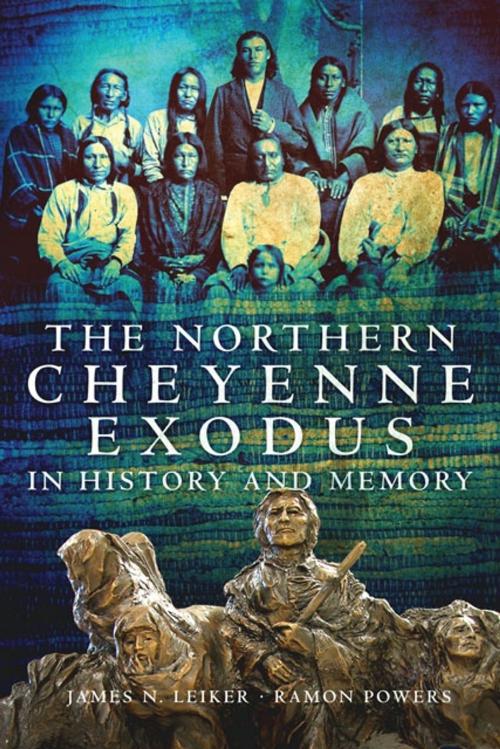The Northern Cheyenne Exodus in History and Memory
Nonfiction, Social & Cultural Studies, Social Science, Cultural Studies, Native American Studies, History, Americas, Native American, United States, 19th Century| Author: | James N. Leiker, Ramon Powers | ISBN: | 9780806188485 |
| Publisher: | University of Oklahoma Press | Publication: | November 9, 2012 |
| Imprint: | University of Oklahoma Press | Language: | English |
| Author: | James N. Leiker, Ramon Powers |
| ISBN: | 9780806188485 |
| Publisher: | University of Oklahoma Press |
| Publication: | November 9, 2012 |
| Imprint: | University of Oklahoma Press |
| Language: | English |
The exodus of the Northern Cheyennes in 1878 and 1879, an attempt to flee from Indian Territory to their Montana homeland, is an important event in American Indian history. It is equally important in the history of towns like Oberlin, Kansas, where Cheyenne warriors killed more than forty settlers. The Cheyennes, in turn, suffered losses through violent encounters with the U.S. Army. More than a century later, the story remains familiar because it has been told by historians and novelists, and on film. In The Northern Cheyenne Exodus in History and Memory, James N. Leiker and Ramon Powers explore how the event has been remembered, told, and retold. They examine the recollections of Indians and settlers and their descendants, and they consider local history, mass-media treatments, and literature to draw thought-provoking conclusions about how this story has changed over time.
The Cheyennes’ journey has always been recounted in melodramatic stereotypes, and for the last fifty years most versions have featured “noble savages” trying to reclaim their birthright. Here, Leiker and Powers deconstruct those stereotypes and transcend them, pointing out that history is never so simple. “The Cheyennes’ flight,” they write, “had left white and Indian bones alike scattered along its route from Oklahoma to Montana.” In this view, the descendants of the Cheyennes and the settlers they encountered are all westerners who need history as a “way of explaining the bones and arrowheads” that littered the plains.
Leiker and Powers depict a rural West whose diverse peoples—Euro-American and Native American alike—seek to preserve their heritage through memory and history. Anyone who lives in the contemporary Great Plains or who wants to understand the West as a whole will find this book compelling.
The exodus of the Northern Cheyennes in 1878 and 1879, an attempt to flee from Indian Territory to their Montana homeland, is an important event in American Indian history. It is equally important in the history of towns like Oberlin, Kansas, where Cheyenne warriors killed more than forty settlers. The Cheyennes, in turn, suffered losses through violent encounters with the U.S. Army. More than a century later, the story remains familiar because it has been told by historians and novelists, and on film. In The Northern Cheyenne Exodus in History and Memory, James N. Leiker and Ramon Powers explore how the event has been remembered, told, and retold. They examine the recollections of Indians and settlers and their descendants, and they consider local history, mass-media treatments, and literature to draw thought-provoking conclusions about how this story has changed over time.
The Cheyennes’ journey has always been recounted in melodramatic stereotypes, and for the last fifty years most versions have featured “noble savages” trying to reclaim their birthright. Here, Leiker and Powers deconstruct those stereotypes and transcend them, pointing out that history is never so simple. “The Cheyennes’ flight,” they write, “had left white and Indian bones alike scattered along its route from Oklahoma to Montana.” In this view, the descendants of the Cheyennes and the settlers they encountered are all westerners who need history as a “way of explaining the bones and arrowheads” that littered the plains.
Leiker and Powers depict a rural West whose diverse peoples—Euro-American and Native American alike—seek to preserve their heritage through memory and history. Anyone who lives in the contemporary Great Plains or who wants to understand the West as a whole will find this book compelling.















